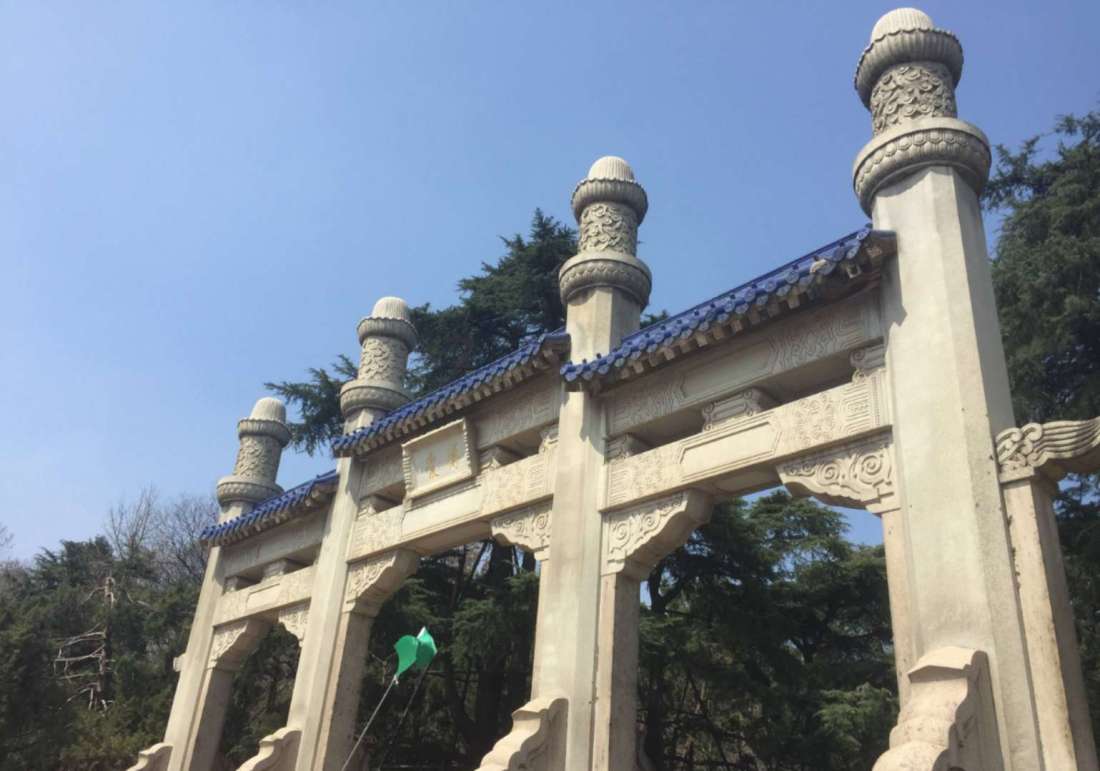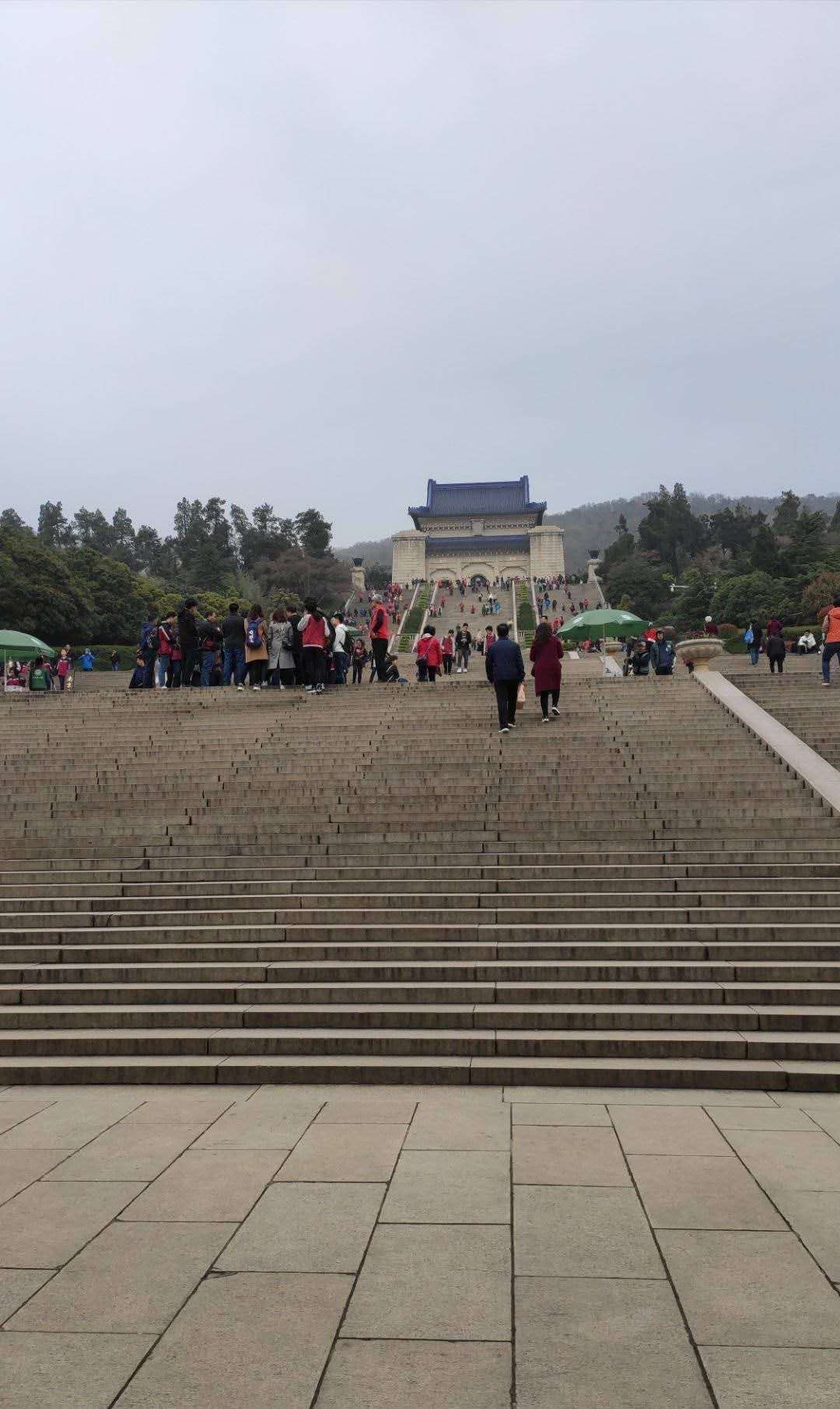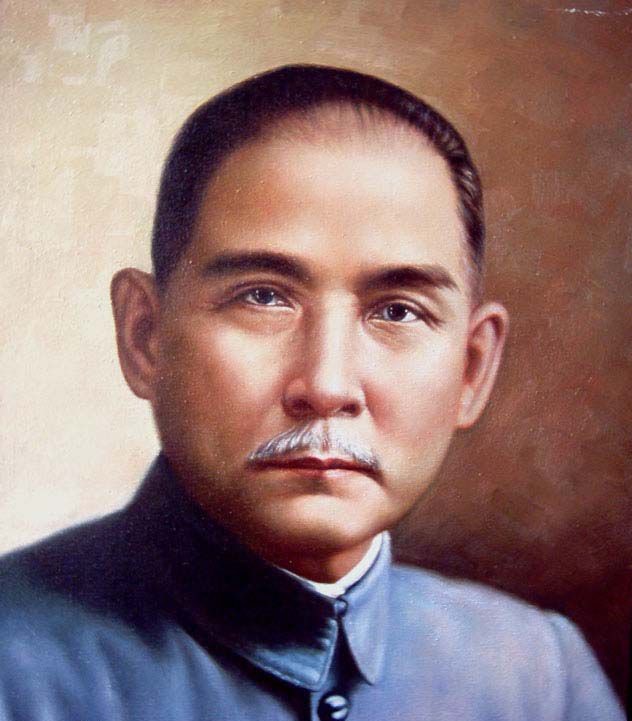Nanjing, China, attracts thousands of tourists with its rich historical background. The city is like spirits, full of mellow fragrance and lasting aftertaste. Located in Nanjing, Zhongshan Mausoleum is built on the hill and hidden between the mountains and forests. It is magnificent and magnificent.It is the tomb of Dr. Sun Yat-sen, a great democratic revolutionary.
 Walking into the gate of Zhongshan Mausoleum, I was immediately attracted by the tall and magnificent of Zhongshan Mausoleum. We first came to the Mausoleum Square. Around the square stood trees of pines, which looked so green and vibrant. As we moved on, a towering granite archway came into view. Looking up, the words “fraternity” inscribed by Dr. Sun Yat-sen appeared in the center of the archway. These vigorous and powerful words warned people to ask for nothing but dedication.
Walking into the gate of Zhongshan Mausoleum, I was immediately attracted by the tall and magnificent of Zhongshan Mausoleum. We first came to the Mausoleum Square. Around the square stood trees of pines, which looked so green and vibrant. As we moved on, a towering granite archway came into view. Looking up, the words “fraternity” inscribed by Dr. Sun Yat-sen appeared in the center of the archway. These vigorous and powerful words warned people to ask for nothing but dedication.
From the archway up to the altar, there are 392 stone steps, 8 platforms. It represents 392 million Chinese compatriots at that time. The tour guide said, “This is the unique design of Zhongshan Mausoleum. From the bottom up, there are only steps. It implies that the road ahead is hard. From the top down, they are all platforms. It implies that after going through hardships and tribulations, when you look at the road you have traveled, you will find that the road in the past is very flat.
I’d like to introduce Mr. Sun Yat-sen to you again. Sun Yat-sen was born in Xiangshan County, Guangdong Province, on November 12, 1866. The philosophy of life he pursued throughout his life is: not to be a big official, only to do big things. Sun Yat-sen, Mr. Sun Yat-sen has indeed done many great things for China. His leaders overthrew the late Qing government and ended the feudal monarchy; it established the Huangpu Military Academy and Zhongshan University; he formed the Chinese Kuomintang and became the first president of the Republic of China; he put forward the idea of the separation of the Three People’s Principles and the Five Powers.
In 1925, Mr. Sun Yat-sen was invited by Feng Yuxiang to go north to discuss state affairs, but his liver cancer suddenly broke out and his treatment was ineffective. He died at the age of 56, so Mr. Sun Yat-sen left the world… Sun Yat-sen was honored as “the father of the Chinese nation” in memory of the great national government’s decree to the whole country. According to his will, on June 1, 1929, a mausoleum was built at the foot of Zijin Mountain in Nanjing, where Sun Yat-sen was permanently buried for the memory of future generations of the Chinese nation.
Up to the entrance of the tomb, there is a bronze statue of Sun Yat-sen, a great Chinese man, lying in a bronze coffin with his eyes closed and his brows locked, as if he were still worried about state affairs.

As early as the first year of the Republic of China (1912), Sun Yat-sen visited Zijin Mountain several times when he became the interim president in Nanjing. On March 10, 1912, after Sun Yat-sen resigned from his temporary presidency, he went hunting with Hu Hanmin and others in Zijin Mountain. He saw here carrying green hills and facing Pingchuan with great momentum. He laughed and said to his left and right, “When I die the next day, I would like to beg the people for the earth to resettle my body.”
Sun Yat-sen’s Lingzhao (chen) Temporary Chu Biyun Temple. Sun Yat-sen had long expressed his hope that he would be buried in Zijin Mountain in a hundred years. On his deathbed, Sun Yat-sen would still bury his family members and waiters at Zijin Mountain in Nanjing. Mr. Sun has a will: “After my death, I can be buried at the foot of Zijin Mountain. Because Nanjing is the seat of the provisional government, I will not forget the 1911 Revolution.” In accordance with Sun Yat-sen’s wishes, Lingshu temporarily built a mausoleum in the Biyun Temple of Xiangshan, Beiping, and Zhongshan, Nanjing.
This is Zhongshan Mausoleum, which not only places people’s lofty respect and memory for Dr. Sun Yat-sen, but also is a masterpiece of famous architects, with high artistic value.
Beautiful place
LikeLike
nice blog
LikeLike
if I have time I will go there with my friends
LikeLike
really good
LikeLike